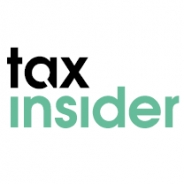
Tax Insider outlines tax saving strategies for higher earners, by Tony Granger.
Introduction
The personal allowance is a valuable benefit as it reduces your taxable income. However, if you earn in excess of £100,000, then the personal allowance reduces as follows:
- If your adjusted net income is over £100,000 you lose £1 for every £2 above the limit. At £116,210 earnings you are left with no personal allowance.
- As you are losing your personal allowance on income above £100,000, combined with a tax rate of 40%, your effective rate of tax on earnings between £100,001 and £116,210 is 60%.
There is plenty of motivation to reduce your net adjusted income to below £100,000 to retain your personal allowance, and reduce your tax burden.
The current personal allowances for 2012-13 are:
Basic personal allowance £8,105
Age 65-74 – £10,500
Age 75+ - £10,660
Tax rates for 2012-13 are as follows:
- Savings rates 10% :£0- £2,710
- Basic rate 20%: £0 - £34,370
- Higher rate 40%: £34,371 - £150,000
- Additional rate: 50% over £150,000
Strategy 1 – if Married or in a Civil Partnership
If you have a lower-taxed or lower-earning spouse then consider transferring income-producing assets to them. You could save your personal allowance and use their allowance more effectively.
The transfer must be outright and unconditional, and there is no CGT if living together or IHT if UK domiciled. If you are a 40% taxpayer and you transfer the income-producing asset to a non-taxpaying spouse you save 40% (e.g. on interest income) or 22.5% (on dividend income).
Strategy 2 – if you have Investments
Redistribute investment capital so that you can reinvest in tax-free investments, or reinvest in tax-efficient investments that produce no income – such as unit trusts and open-ended investment companies for growth, or investment bonds. Either try to produce less taxable income or invest for growth.
Strategy 3 – Reduce your Taxable Income through Pension Contributions
Making a pension contribution (you can make gross contributions of up to £50,000 per annum unless you use carry forward of unused allowances from the past three years, where the total contribution in the current year could be up to £200,000) can save your personal allowance and give you tax back.
The following example shows how this works:
Example
Assume taxable earnings of £120,000 p.a. Male age under 65.
What are the savings in terms of tax, should you make a lump sum pension contribution?
Lump sum contribution of£21,000 gross, net £16,800
Brings ’adjusted net income’ to £99,000
Saves personal allowance of £8,105 (so tax saved on this at £3,242, i.e. £8,105 at 40%)
HMRC also gives tax relief of 20% x £21,000 = £4,200 as you are a 40% taxpayer making a pension contribution (in addition, HMRC uplifts your net contribution of £16,800 by £4,200, so that the gross contribution is £21,000).
Total savings in tax: £3,242 + £4,200 = £7,442 for a net pension contribution of £16,800.
This strategy has saved your personal allowance and reduced your tax payable.
Strategy 4 – Make Charitable Donations
Similar to pension contributions above, making charitable donations (Gift Aid payments) is currently unlimited (although there are steps being considered by the Government to cap this). Charitable donations reduce ‘adjusted net income’, therefore allowing you to save your personal allowance if reducing adjusted net income to below £100,000. Tax relief is claimed by the charity – the payment is treated as being paid ‘net’. A higher rate taxpayer may claim additional relief against Income Tax or Capital Gains Tax (the Income Tax claim is for the difference between the higher rate and basic rate (40-20=20%) on the total value of the donation. If you donate £100, the total gift to the charity is £125 as a gross donation. You get tax relief back of 20% x £125 = £25.
Practical Tips:
Two additional tax tips are that
- you can elect for the donation to apply to the previous tax year; and
- you can gift shares, securities, land, buildings- these all reduce your taxable income.



Please register or log in to add comments.
There are not comments added